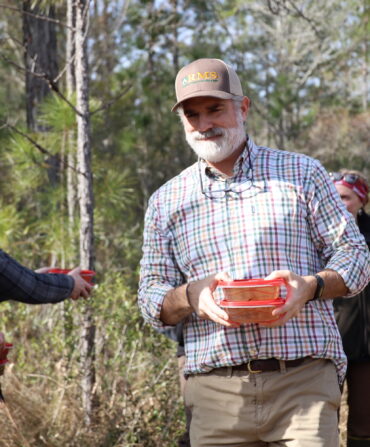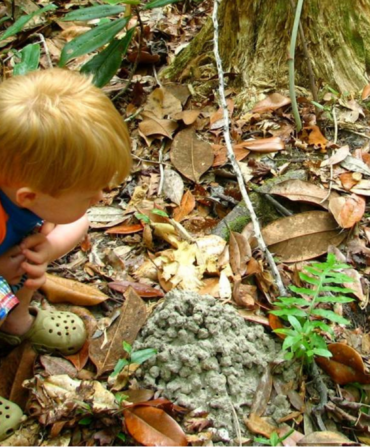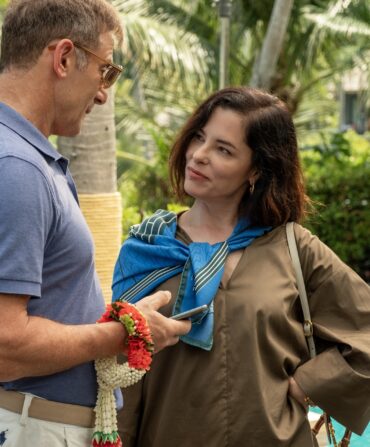Alabama
Shellfish Love
Food
Set among the restored cabins and historic houses of the Landmarks Foundation’s Old Alabama Town, the Montgomery Oyster Festival (September 20) turns a late-summer Saturday into a laid-back seafood feast. The event cheers on an aquaculture industry that’s thriving both below sea level and above it, in part due to a series of ongoing restoration projects adding back several thousand tons of limestone cultch—a substrate needed to support young oyster growth—to the Alabama coast. Whether smoked, grilled, or icy cold on the half shell, the oysters arrive from chefs and a crew of local farmers, a supply-and-demand relationship that the festival is committed to nurturing long-term. “Beyond the event -itelf, we’re all about building a better chain of communication for chefs and farmers,” says Steven Lambert, a cofounder of Lightning Line, which produces the fest. “We’re cultivating our own ecosystem.”
Arkansas
News from the Grapevine
Food
“Muscadines are the original table grape of the South,” says Margaret Leigh Worthington, a fruit scientist at the University of Arkansas System Division of Agriculture. The native grapes are late-blooming, accustomed to the humidity, and resistant to many of the diseases that plague other grapes. Worthington and her research partner, Renee Threlfall, are on a mission to make muscadines more popular across the country. Carrying the torch from her predecessor John Clark, Worthington has worked since 2016 at a research station in Clarksville to improve grape taste and texture. The scientists have created two new muscadine varieties. There’s the Altus, a black grape with floral notes built for making wines, juices, and jams, named for Arkansas’s wine region and trialed by Post Winery; and the Mighty Fine, made for eating fresh, with a taste Worthington calls “a combination of grape bubble gum and roses.” Both varieties will be available to order from Ison’s Nursery and Vineyard, and they’re both “perfect flowers,” meaning a single plant can pollinate itself and produce sweet Southern fruit.
Florida
Sands of Time
Anniversary
Today, American Beach looks a lot like any other beach town. But for much of the twentieth century, when Jim Crow laws prohibited integration in most public spaces, the plot of houses, dunes, and surf on Amelia Island—founded in 1935 by A. L. Lewis and the Afro-American Life Insurance Company—reigned as a vibrant vacation mecca for Black luminaries. “It was a place of pride, triumph, and accomplishment,” says Carol J. Alexander, the executive creative director of the A. L. Lewis Museum at American Beach, which honors the beach’s ninetieth anniversary this year. “Greats like Cab Calloway, Count Basie, and Dizzy Gillespie would play at the jazz clubs in Jacksonville, and then come to American Beach and play in the clubs and resorts there.” W. E. B. Du Bois, Mary McLeod Bethune, Zora Neale Hurston, and Hank Aaron spent time there, too. In 1964, though, Hurricane Dora wiped out many of the homes and businesses. That same year, the Civil Rights Act passed, allowing Black beachgoers to frequent other spots across the South. Developers moved in, and the history of American Beach might have been lost if not for the late MaVynee Betsch, an opera singer and Lewis’s great-granddaughter, known around Amelia Island as “the Beach Lady,” who laid the groundwork for the museum that preserves the area’s legacy. “Lewis named it American Beach because we are as American as everyone else,” Alexander says. “This story is an important part of our nation’s history.”
Georgia
Glazed and Perused
Arts
Edenic scenes of water lilies and live oaks laden with Spanish moss appeared as oft-referenced motifs for the women of Newcomb Pottery, an arts enterprise known for its decorative ceramic vases and tableware. At Savannah’s Telfair Museums, The Moss Mystique: Southern Women and Newcomb Pottery (through September 7) exhibits a collection of ninety such works by the graduates of the H. Sophie Newcomb Memorial College in New Orleans, where the program ran from 1895 to 1939. “This is a story about Southern womanhood, artistry, and the images we create about this region,” says Elyse Gerstenecker, the exhibit’s curator. Nationally recognized for their semiabstract tableaux of Southern flora, the decorators glazed idyllic visions of the South, representing a romanticism still prevalent today. “I hope audiences can poke some holes in this mystique,” Gerstenecker says, “and leave asking, ‘What is the story I tell about the place I live?’”
Kentucky
Let’s Boogie
Traditions

Visit Natural Bridge State Resort Park in Slade on a Saturday evening and you’re likely to hear the voice of Jane Bolin through the trees, calling out steps for a line dance to a crowd of eager first-timers and regulars alike. Hoedown Island, a tiny park pavilion reachable only by footbridge, has hosted dances for sixty years, earning billing as the “clogging capital of Kentucky.” Held each weekend from April to October, the hoedowns welcome all, whether you’re a two-stepping pro or still finding your footing. The summer tradition is credited to the late Richard Jett, a local legend who handed the torch to Bolin, now in her nineteenth year of calling colorfully named dances like the Teton Mountain Stomp. “Richard loved to teach; before he passed, he told me I would know what to do,” Bolin says. “I’m not sure it was true at the time, but I’ve been doing it ever since.”
Louisiana
Back on Amtrak
Travel
Twenty years after Hurricane Katrina wiped out passenger rail service along the Gulf coast, travelers this summer will again be able to hop a train to New Orleans from Mobile or vice versa. The newly restored Amtrak line, called the Mardi Gras Service, will run twice daily in each direction with stops in four Mississippi cities: Bay St. Louis, Gulfport, Biloxi, and Pascagoula. The route will offer an easy and inexpensive way to visit New Orleans, with fares often costing less than parking downtown, says Kay Kell, who serves on the Southern Rail Commission, which worked for years to secure federal and state funding for the service. The line will also grant easy access to Mobile and the Mississippi Gulf Coast, places ripe for tourism, says Knox Ross, the Rail Commission’s chairman: “They’re very walkable, livable downtowns that are just really attractive.” Before Katrina, the coast was served by the Sunset Limited, a California-to-Florida route that was inconveniently timed for regional travelers. The new service will have Wi-Fi, business class seating, and food and drink options. “It’s really a civilized way to travel,” Ross says.
Maryland
150 Years of a Guiding Light
Anniversary
Arising like a vision from the Chesapeake Bay, the unexpectedly charming, Victorian cottage–like Thomas Point Shoal Lighthouse has been guiding vessels for 150 years. This National Historic Landmark is “the last surviving screw-pile lighthouse still being used for navigational purposes in its original location,” says John Potvin, its current manager and a certified Chesapeake Bay Storyteller. The 1875 structure, which replaced a landlocked lighthouse inadequate for ships bound for Baltimore, needed to stand offshore to mark the precise spot of the shoal, notes Henry Gonzalez, president of the U.S. Lighthouse Society. And so the compact hexagonal structure, outfitted with decorative baluster splats, was built atop cast-iron screw piles that go down some twenty-two feet into the bay bottom. In 1939, the Lighthouse Service became part of the Coast Guard, and two to four keepers known as coasties oversaw the light until its automation in 1986. With a beam reaching up to three miles, the lighthouse remains a navigational beacon and destination—guided two-and-a-half-hour boat tours board at the Annapolis Maritime Museum on most weekends through October 19. Visitors are often shocked by the spaciousness of the light’s first floor, with four rooms that have been restored to their nineteenth- and twentieth-century glory days. “Every time I go out there,” Gonzalez says, “I still get goose bumps to feel that connection with the past and the legacy for the future.”
thomaspointshoallighthouse.org
Mississippi
King of the Century
Music
Before he was an international blues legend, B.B. King was a son of the Mississippi Delta. Born on September 16, 1925, near Itta Bena, he spent his youth peering between the boards of local music joints on the chitlin circuit until he was old enough to take the stage himself, stunning audiences with his distinctive riffs—from both his vocal cords and his guitar strings. Now, a hundred years later (and a decade after his death), King’s singular musical talent is still inspiring generations. “He went on to become this world-renowned icon and was the ambassador for blues music all over the world,” says Malika Polk-Lee, executive director of the B.B. King Museum in Indianola. The museum will be paying tribute to his legacy all year long, including at a concert on September 13 at the recently reopened Club Ebony, a small-town venue once owned by King that, before the global fame and recognition, provided a space for him to share his inimitable talent with dancing Delta crowds.
North Carolina
Appraising Appalachia
Crafts
Nestled in the Blue Ridge Mountains, about an hour northeast of downtown Asheville, sits the Penland School of Craft, a sanctuary for artisans. A ticket to Penland’s Annual Benefit Auction (August 22 and 23) offers a shot at owning a piece of the Appalachian traditions Penland fosters, including ceramics, jewelry, quilting, and weaving. Everything up for bid has been made by current and former Penland students, residents, and instructors like Andréa Keys Connell, who donated ceramic pieces because, she believes, “nurturing and protecting spaces like Penland feels not just important but essential.” Last year’s fete raised almost half a million dollars for the school, a month before Hurricane Helene struck the campus and region. This year’s event, the school’s fortieth, will salute the spirit of recovery, resilience, and community that has enabled Penland to flourish for nearly a century.
South Carolina
Twenty Euphoric Years
Food
In 2006, when restaurateur Carl Sobocinski and homegrown singer-songwriter Edwin McCain launched Southern Exposure, a food and drink festival in Greenville, the city’s food scene wasn’t much to write home about. Two decades later, that festival has blossomed into Euphoria, an ongoing celebration of Greenville’s culinary feats that has helped bring a national spotlight—and major hot spots—to its hometown. “In the early days, it was just four events in four days,” says Morgan Allen, the executive director. “Now we’re a yearlong festival, with eighty-one events during our main weekend,” which this year runs September 18–21. For the twentieth anniversary, Euphoria is looking back, with events including a boozy brunch complete with nostalgic dishes and a DJ curating eighties and nineties bops; and a dinner hosted by Steven Greene, whose popular local spot, Devereaux’s, closed in 2013. It’s all capped by the massive tasting event Feast by the Field and a party in the park headlined by St. Paul & the Broken Bones.
Tennessee
It’s a Walk-Off
Equestrian
In Shelbyville, a sort of Ministry of Silly Walks takes center stage once a year—not by Monty Python actors, but by horses. The Tennessee Walking Horse National Celebration (August 20–30) pits noble, front-leg-stretching steeds called walking horses against one another to see who can move the most fluidly without jostling their tranquil riders. “It’s a supersmooth gait,” says CEO Warren Wells. “The horse has one foot on the ground at all times, so the rider is not bouncing around. They call it an all-day pleasure horse. Farmers used it to work and ride, but like so many things from our past, we turned it into a competition.” Tennessean Henry Davis held the inaugural meet in Shelbyville in September 1939. The sport soon expanded throughout the Southeast, then contracted and landed in Middle Tennessee. Now the grounds take up 104 acres, schools close for the week of the event, and 1,300 horses showcase their silly swaggers for serious fans.
Texas
Root Awakening
Art
Raul De Lara’s towering monstera plant carved from deep-brown walnut evokes the artist’s memories of the age-old, gargantuan green versions in his native Mexico. De Lara, who immigrated to Austin with his family at age twelve, crafts these surreal, allegorical sculptures, primarily from wood, in his New York studio to reflect on the highs and lows of the immigrant experience. His career has flourished in recent years, with residencies, awards, and exhibitions nationwide. Now his solo show, opening September 12 at the Contemporary Austin, represents both an artistic and a personal homecoming for the sculptor, who earned his BFA at the University of Texas at Austin. Central to the presentation are a group of slightly personified cacti, growing in terra-cotta-like pots. (An optical illusion—they’re all made from wood.) “The sculptures are shaped into symbols that represent chapters of my upbringing,” De Lara says. “Working construction with my parents; serving tables at a Mexican restaurant; and a ladder representing my family’s journey immigrating to the United States for a better life. All of the people who made Austin my home came from somewhere else, too.”
Virginia
Bull Horn
Conservation

Every fall, haunting howls echo through the southwestern Virginia forests. The noise, the mating call of male elk, called bugling, still sends a shiver down the spine of Austin Bradley, the superintendent of Breaks Interstate Park, on the Virginia-Kentucky border. “It’s one of those sounds of the wilderness, the wild, that when you first hear it, you’ll never forget,” he says. The park’s seasonal elk tours offer a chance to listen to the call and note what Bradley dubs “Appalachia’s greatest conservation success story.” Elk, he notes, went extinct in the state in 1855, and in a few years were wiped out east of the Mississippi. But since the species was reintroduced in Virginia in 2012, it has seen a resurgence. Now the state’s population has reached about three hundred individuals. Fall tours, offered late August through October, typically sell out, leading the park to add slots this year. The tours, Bradley says, have had a 100 percent success rate of spotting elk, and some guests return year after year. “We’re seeing dozens on every tour. The elk are majestic.”
Washington, D.C.
Brick by Brick
Architecture
Woodland classrooms, cornucopia-shaped tree houses, and futuristic apartment buildings stand out among the featured projects in A South Forty: Contemporary Architecture and Design in the American South, on view at the National Building Museum in D.C. through winter 2026. By focusing on more than forty architecture firms and the realities of the modern South—urbanization, evolving cultural identity, natural disasters—the exhibit’s curator, Peter MacKeith, crafts both a retrospective and a playbook for the future of the region’s homes and businesses. “Design is almost always best imagined as a response to external factors,” says MacKeith, dean of the Fay Jones School of Architecture and Design at the University of Arkansas. Profiles of lauded architects such as Charleston, South Carolina’s Ray Huff and Raleigh’s Frank Harmon are peppered throughout the exhibition’s models, including log cabins for a Tennessee artist residency and a sleek new student center in North Carolina. “While there’s wonderful architecture in the Southeastern states of historical importance,” MacKeith says, “there’s also this contemporary architecture that is becoming increasingly available for people to see in their own communities.” And just steps away, for young (and young at heart) museumgoers, the ongoing Building Stories exhibit brings children’s literature to life by demonstrating the roles of architecture, engineering, and design in such picture books as David Macaulay’s Rome Antics. Or, there’s Brick City (through August 2026), displaying thirty-seven architectural wonders from around the globe constructed from hundreds of thousands of tiny Lego bricks, where the next generation of designers can try their hand at building a metropolis of their own.
West Virginia
He’s Creepy and He’s Kooky
Traditions
For five years now, the small town of Philippi has held a daylong bash honoring its most famous, larger-than-life local: the late six-foot-nine actor Ted Cassidy, best known for playing the stoic butler in the original Addams Family sitcom. Initially a one-off event, Lurch Fest (August 2) has evolved into a town-wide tribute as offbeat and charming as Cassidy’s famous character. There’s an Addams Family Costume Contest and Parade featuring Wednesdays and Gomezes of all ages, a dazzling array of antique hearses, live music, mouthwatering Lurch Burgers, a special “You Rang?” beer from local brewery High Ground, and even a nighttime golf tournament. Cassidy’s son, Sean, who bears a striking resemblance to his famous father—albeit a few inches shorter—has joined in on the fun with his Lurch Merch booth. For the “Son of Lurch,” hearing from attendees who remember his father from childhood is a real highlight, even if the memories are a bit hazy. “Almost every older woman I talk to there,” Cassidy points out, “says, ‘Oh, I went to prom with your dad.’
by Jennifer Billock, Larry Bleiberg, Helen Bradshaw, Caroline Sanders Clements, Robert Alan Grand, Lindsey Liles, Grace Roberts, and Amy Brecount White








